IIFYM 101 | Should I do IIFYM? | Macros: A Visual Guide | Macro Calculator
For decades, the number of calories you ate in a day was the end of the story. Stay in a deficit, and you’d supposedly lose weight. Slip into—or dive into—caloric excess, and you’d gain weight. That approach worked for some people, but for plenty of others, it proved frustrating and miserable.
Then someone finally asked the question, “What if all calories aren’t the same? What if they’re just the beginning of the story?”
In reaction, a dietary approach called IIFYM, or “if it fits your macros,” has exploded in popularity. If you’ve recently used a macronutrient calculator and want to see what those numbers mean, or if you’re just curious about a better way of dieting, this guide is for you.
What Are Macros?
Macros, short for “macronutrients,” is the term used to describe the three categories of nutrients making up the calories in your food: protein, carbohydrates, and fats.
Rather than placing all of your attention on counting calories or severely limiting certain macronutrients like carbs or fats, IIFYM focuses on meeting daily “targets” of all three. Done correctly, this provides a consistent calorie intake, as well as one that can be personalized in endless different ways.
At first glance this may seem needlessly complicated. After all, why count three different things when you can count just one? The answer is that by emphasizing specific amounts of each macronutrient (and choosing quality sources), you can better tailor it to your lifestyle, tastes, and goals.

Calories vs. Macros
Imagine 2,000 calories. Hard to do, right? You could get to that number countless different ways, both unhealthy and healthy. That’s where the old “calories in, calories out” mindset falls short.
One version of a 2,000-calorie day could help you fuel fantastic workouts, add muscle, and not feel like you’re fighting hunger throughout the day. Another could leave you on the same-old blood sugar roller coaster, feeling cloudy and dragging your butt through your workouts.
Make no mistake, if you go from 4,000-5,000 calories per day to 2,000, you’ll almost definitely lose weight for a while. Or as rabbi and weight-loss success story David Katz put it in the article, “I Went from a Little Guy to Morbidly Obese,” “Eliminate mistakes like two-liter bottles of cola, and you will find 2,000 calories easily enough.” But what happens if you’ve been at 2,000 calories for months, or years even, and it’s not working anymore? Then it’s time to look at your macros.
Managing macros is a lot like managing your budget. Rather than being able to spend whatever you want as long as it hits a grand caloric total, you have to budget three different currencies: protein, carbohydrates, and fat.
If you want to spend your carbs on a big pancake breakfast, you certainly can, but remember that you only have so much to spend—and that you still need to hit your protein and fat totals for the day. And don’t be surprised if later that afternoon, you’ve spent all of your carbohydrates and are now lacking energy to power through the rest of the day.
Alternately, you could use the Bodybuilding.com Recipe Database to look for high-protein, low-sugar breakfasts—we’ve got over 300 currently. Then, you could have more carbs to “spend” at dinner.
That’s the beauty of IIFYM: it allows you to be more targeted in your indulgences and make more informed choices about what you choose to eat and why.
“Health food” is light years ahead of where it was when you were growing up.
Meet Your Macros: Protein, Carbs, Fats
When done right, IIFYM provides a comfortable balance of predictability and flexibility. After setting your daily target macros using a macronutrient calculator, you can consume a variety of foods to meet your goals. Build your days around these fundamental sources, and you’ll have the room to customize for your taste and cravings.
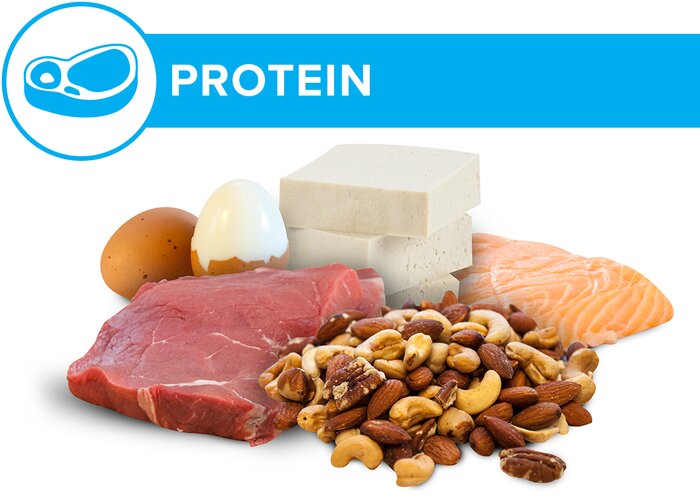
What it does: Dietary protein is a combination of amino acids that help to instigate recovery and muscle growth throughout the body. Protein also promotes feeling full and satisfied, and increasing it beyond traditional guidelines been shown to be beneficial for people who are active or looking to lose or gain weight.
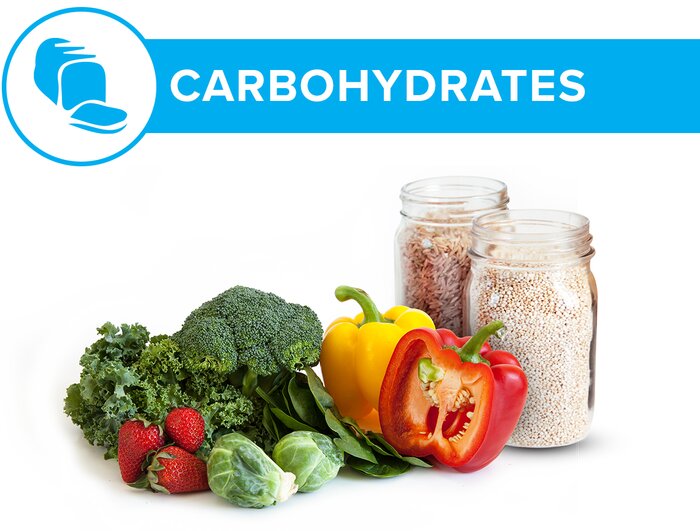
What it does: Carbohydrates are the body’s primary energy source. Both your brain and your muscles prefer to use them as fuel.
There are two types of carbohydrates: complex and simple. Complex carbohydrates digest slowly, and the foods that contain them are often darker in color. Complex carbohydrates sometimes get called “good carbs” because they contain an abundance of vitamins and minerals and provide a steady release of energy due to their high fiber content. Examples include oats, brown rice, starchy vegetables, and whole-wheat bread.
Simple carbohydrates digest quickly and the foods that contain them are often lighter in color. Examples include white rice, white bread, cookies, and candy. They aren’t “bad carbs,” but they probably shouldn’t be the only ones you eat. Many lifters and other athletes prioritize them after a workout, while choosing complex carbs the rest of the day.
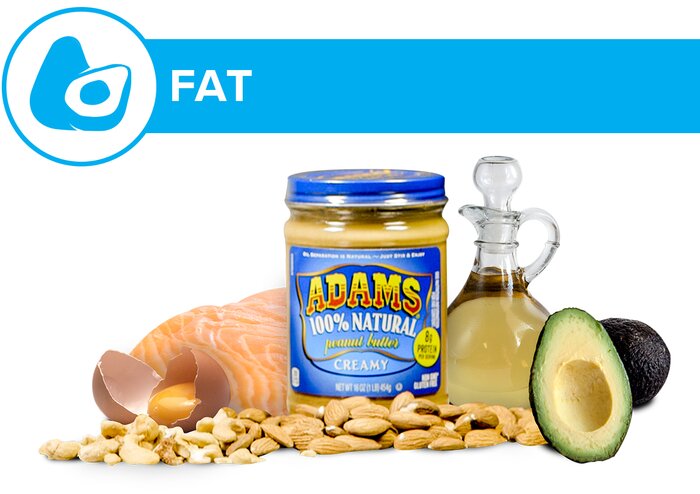
What it does: Once treated as a nutritional bad guy, fat is now rightly recognized as an essential nutrient involved in many bodily functions. It’s crucial for cell signaling and communication in the body, it allows your body to absorb vitamins, and it promotes an optimal hormonal environment in the body.
Unsaturated fats: These are typically regarded as the “healthiest” fats because studies indicate they positively impact heart health, cognitive function, and even workout recovery.
Saturated fats: These positively influence testosterone production and optimize hormone production in the body.
Trans fats: These are sometimes referred to as “bad” fats because they have been shown to negatively impact heart health and increase your risk for metabolic abnormalities.
If you’re considering tracking your macros, these three macros will be your bread and butter—literally! Take the time to learn about them, and it will pay off every day.
Who Is IIFYM Best For?
IIFYM is great for plenty of people, but it’s not for everybody—or at least, not at every stage of their fitness journey. To help figure out who it’s best for, IFBB bikini pro and researcher Laurin Conlin designed a 20-week study comparing flexible dieting and meal-plan dieting for 27 subjects. Here’s what they found:
“For some of those who had less experience with nutrition and diet, the structure of a meal plan proved to be invaluable to their success,” she recalls. “It’s possible that diving into a flexible approach would have been overwhelming, and ultimately would have worked against both their adherence and their success.”
For others, however, the opposite was true. “Those with experience in nutrition, macronutrients, and dieting felt confident executing a flexible approach, and their success showed,” Conlin explains.
Tracking macros is also a popular approach for people to “level up” their nutrition to match an intense training plan. Numerous programs in Bodybuilding.com’s workout plan service BodyFit give recommended macros. Some of the most popular, like Project Mass: Jake Wilson’s 16-Week Muscle Building Plan, take the next step and provide separate macros for every single training and rest day to maximize both performance and recovery.
Still on the fence? Health coach and personal trainer Sohee Lee helps navigate the decision process in her article, “To Macro or Not: Should You Track Your Macronutrient Intake?” In it, she outlines eight specific scenarios when someone should—or definitely shouldn’t—track their macros.
Does IIFYM Work?
If you’ve been through the wringer of old-school dieting, it can be easy to see IIFYM as a free-for-all. And make no mistake, being in a caloric deficit is still crucial to losing weight, no matter where your foods are coming from.
But IIFYM does offer a few unique benefits that are game changers for many dieters.
Difference 1: Fewer Restrictive Behaviors
Many old-school diet approaches are based around strict calorie counts, approved food lists or strict meal plans, and near-complete elimination of a food or food group to lose weight (think low-fat or low-carb). This approach can work initially, but over the long term, many people find that strict, planned approaches end up ruining their progress.
When the dieter is feeling deprived and low-energy, a cheat meal can easily turn into a cheat day, which turns into an eventual lack of care for the original diet. Within weeks, they end up back at their pre-diet weight, if not heavier.
This is the all-too-familiar “yo-yo dieting” cycle. Our community has let us know that in many of their fitness journeys, flexible dieting was crucial in helping to break that cycle so they could lose weight and keep it off.
“I stopped believing there are good and bad foods,” explains Kyle Frank, who used flexible dieting to lose 100 pounds and keep it off. “I allow myself to have anything I want, but I manage the quantity. This was a huge mental shift for me. I count macros and change them depending on my goal. I no longer feel restricted to a few select foods. Since I no longer feel deprived, I no longer have the need for “cheat days.”
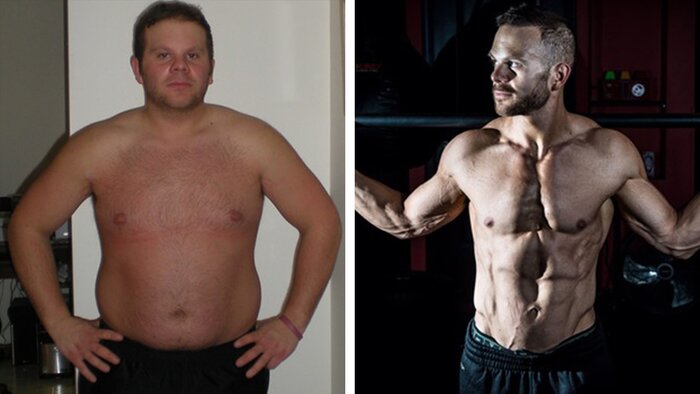
Kyle Frank
Difference 2: Athletic Performance
Anyone who has ever tried to follow a tough training plan while on a strict caloric-restriction plan—or one that’s extremely low-carb or low-fat—knows how difficult that can be. Your workouts suffer dramatically!
Sure, photo-worthy abs may be ultimately “made in the kitchen,” as they say, but they’re also earned through month upon month of high-quality ab-focused lifting and cardio. If you want to improve your body composition in a lasting way, this is non-negotiable! Extreme caloric restriction won’t get you there.
IIFYM respects the unique role that each plays in both looking and performing right. Those who have success with it find that it enables them to feel more energized and train intensely even while losing weight.
Difference 3: Social-Situation Success
If you’ve ever been on a diet that had a strict meal plan or a list of “forbidden” foods, you know how even the thought of cake or fast food can make you feel guilty. Far too often, people indulge and then punish themselves later on by eating, well, nothing, or very close to it. This isn’t a healthy or sustainable approach.

Following an IIFYM approach promotes less stress in these sorts of situations. As long as you’re tracking, you can “save” some of your carbs or fats from a previous meal in order to “spend” them later for a sweet treat or a meal out at a restaurant.
No, not all restaurants offer up their macros on their website, but most chains do, allowing you more options than ever to eat for lean muscle or weight loss even at fast-food restaurants.
How Do I Start IIFYM?
IIFYM for Beginners
If you’re just starting out, it’s better to keep things simple. Use an established macro calculator and a popular ratio for your specific goal, and give it a few weeks before making any changes. Then, make adjustments to help you keep progressing.
These are the ratios generated by the Bodybuilding.com Macro Calculator:
- Weight loss: 40/40/20 (carbohydrates/protein/fats)
- Weight gain: 40/30/30
- Weight maintenance: 40/30/30
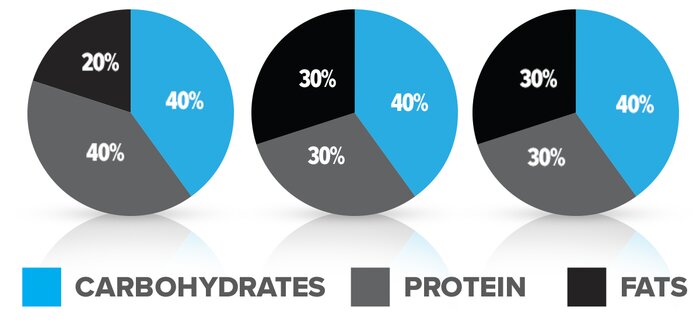
Then, it’s time to start measuring and tracking your food! Trainer Vince Del Monte shows how in his article, “From Here to Macros: 4 Steps to Better Nutrition.“
IIFYM for Experienced Dieters
The longer you’ve been training and tracking your food, the more you know about how your body responds to certain levels of fat or carbs. Great! You can use this information to your advantage.
- Step 1: Use our Macro Calculator or Calorie Calculator to find your estimated daily calorie needs.
- Step 2: Use the Customize My Macro Ratio option in our macro calculator to select your preferred protein intake, or the recommended range for your training program. The most popular range is 30-40 percent.
- Step 3: Balance the rest of your calories between carbohydrates and fat as you see fit. Some prefer a higher carbohydrate approach, while others prefer a high-fat, moderate-carbohydrate approach. Nutritionist Sarah Wilkins helps navigate this balance in her article, “Macro Math: 3 Keys for Dialing In Your Ratios.“
In either case, your chances of success will be far better if you’re not going at it alone. The members of BodySpace, Bodybuilding.com’s online fitness community, have been tracking their macros and teaching others how to do it for over a decade.
After that, it’s time to get in the trenches and start counting! IIFYM isn’t a set-in-stone corporate system, it’s a personal approach and there are as many ways to approach it as there are foods in the store. The only way to find yours is to start doing the work!
Become a Macro Master
